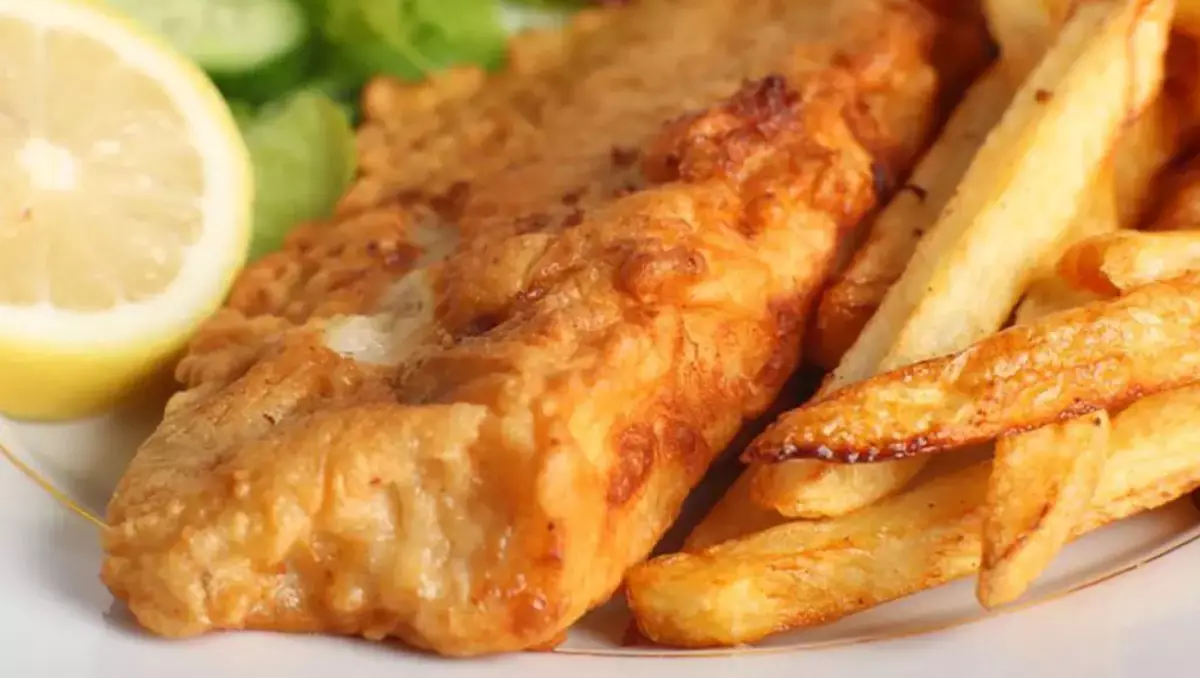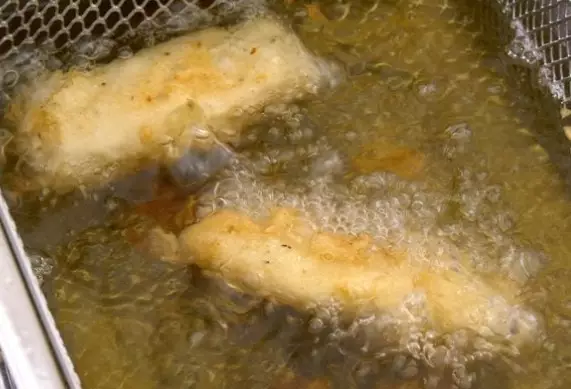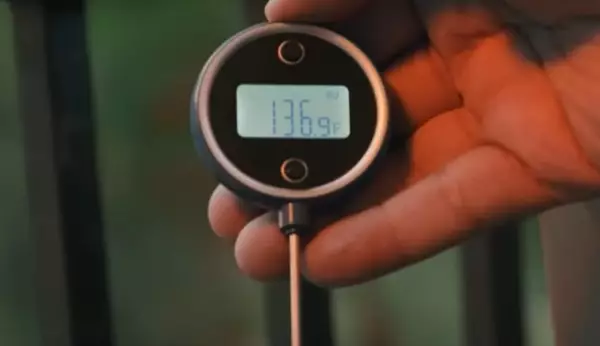
Fish and Chips Made Easy: The Ultimate Thermometer Hack
Fish and chips, the classic British dish loved by everyone, needs no introduction.. It is sold in restaurants and food stalls everywhere in the world. If you have a craving for this and want to make it at home, you might be wondering how to make the best fish and chips like the way they do in restaurants. Continue reading to learn the secrets to the best fish and chips that are light, crispy, and satisfyingly delicious!
Table of Contents
How to Choose the Best Fish
Choosing the best fish is one of the most important decisions when making fish and chips. Cod is a popular choice and is the go-to option for many who want to make this dish.
Cod is popular for fish and chips because of its mild flavor and tender texture. This light and flaky texture goes perfectly with crunchy batter and fluffy chips (potatoes). At the same time, the mild flavor of the fish works well with the dip and other seasonings.
At the same time, cod is a low-cholesterol and low-sodium fish. But if you don’t like cod or you cannot find this fish in the grocery, other alternatives are haddock and pollock.
How to Choose the Best Potatoes
Choosing the right potatoes is as critical as the choice of fish. For the best fish and chips, Maris Pipers are your best option due to their waxy and floury texture. This helps the chips remain soft on the inside while the outsides are crispy and firm.
Another great option is King Edward potatoes for their light, fluffy texture. They also have a lower starch content that brings out a beautiful golden color when fried.

Oil and Temperature
The cooking oil is a critical factor when making fish and chips. You need cooking oil with a high smoking point when frying fish and chips. In addition, the cooking oil must have a neutral flavor. For this, you can choose between vegetable oil and sunflower oil.
Heat the oil to 350-375 degrees F. Temperature is very important when frying, especially with fish and chips because you want it all to be light on the inside but crispy on the outside. For this, you will need a deep fry thermometer.
Slowly bring the heat of the oil up to 350 degrees F and then you can toss in the fish and chips. If the oil temperature is below that, it can result in the fish and chips being soggy and greasy. If it’s higher than the recommended temperature, they can burn!
Fish and Chips Ingredients
For the Fish:
- 7 tbsp of all-purpose flour
- 7 tbsp cornstarch
- 1 tsp baking powder
- Fine salt
- Freshly ground black pepper
- 1/3 cup cold beer
- 1/3 cup sparkling water
- Four white fish fillets
For the Chips:
- 2 lbs peeled potatoes
- Vegetable oil
Instructions
Step 1
In a bowl, set aside two tablespoons of all-purpose flour. Mix the remaining flour with the cornstarch and baking powder in a separate bowl. Add salt and pepper.
Step 2
Use a fork to whisk the mixture and add the beer and sparkling water. Continue mixing until you achieve a thick but smooth batter. Place the batter in the refrigerator for at least 30 minutes before frying.
Step 3
Cut the potatoes into ½ inch thick and ½ inch wide slices. Place them in a colander and rinse with water.
Step 4
Place the peeled potatoes in a saucepan with water and make sure they are completely submerged in the water. Bring the water to a gentle boil over a high heat and then lower the heat to allow the potatoes to simmer for 3-4 minutes.
Step 5
Drain the potatoes and pat them dry with paper towels. Keep them covered with the paper towels and place inside the refrigerator until they are ready for frying.
Step 6
Lay your white fish fillets over paper towels and season them lightly.
Step 7
Heat oil in a saucepan until it reaches 350 F. Use a digital thermometer to make sure it’s reached the ideal frying temperature.
Cook the chips first for about 2 minutes. Do not brown them yet. Remove the chips from the oil and drain them on a paper towel. Set the chips aside.
Step 8
Toss the white fish fillet into the reserved flour and shake off any excess flour.
Dip the fish fillet into the batter mixture. Make sure the entire fillet is coated.
Carefully lower the fish fillet into the oil. Monitor the temperature to make sure it is at 350 F. Wait until the fish is crisp and golden. Turn them occasionally or as needed. This takes about 6-8 minutes.
Step 9
Remove the fillets from the oil and place them over a paper towel-lined baking sheet. Sprinkle them with salt and pepper.
Put them into the oven to keep warm until you are ready to serve.
Step 10
Crank the heat up on the oil until it reaches 400 F. Put the chips that you fried earlier into this oil until they are golden and crisp. This takes about 5 minutes.
Remove the chips from the oil and drain. Add a touch of salt for seasoning.

Tips for the Best Fish and Chips
The perfect fish and chips is tender and flaky on the inside but crunchy on the outside. If you want to make this dish at home, follow these tips for an enjoyable experience for your palate.
Use Fresh Fish
Aside from choosing the right fish for this recipe, you should pick fresh fish over frozen. Get the freshest fish you can find, whether it’s cod, pollock, or haddock.
If you can’t find fresh fish and have to use frozen, make sure to defrost it and thoroughly pat it dry before coating it in the batter using paper towels to fully absorb any excess moisture.
Dip into the Batter at the Last Minute
The batter is crucial to achieve that crispy exterior. However, wait until you’re ready to drop the fish into the oil before you dip it. This technique ensures the crispiest and lightest coating once the fish is fried.
Use the Right Amount of Oil
You shoudl adjust the amount of oil for frying fish and chips according to the amount you need to cook. In addition, never crowd the pan when frying to ensure that you can maintain the ideal temperature for deep frying.
Another risk of adding too much fish or too many chips at once in the saucepan is that they could end up sticking together.
Get the Oil Temperature Right
The oil temperature for frying fish should be between 350 to 375 degrees F. The same temperature range also applies when you cook the chips.
At this temperature, the fish and chips end up crispy on the outside but tender on the inside. It also creates that beautiful, golden brown exterior. If you crank the heat up higher, you could end up with burnt fish and chips.
Blanching and Double Frying
This tip is for cooking the best chips. You should blanch the potatoes first before frying. This step ensures you can get rid of the excess starch in the potatoes, helping you achieve a uniform color and texture. Use a towel to pat the potatoes dry and eliminate any excess moisture for crispier chips.
Aside from blanching the potatoes, the double frying method works if you want really good, crisp chips.
Discover Other ChefsTemp Products
Discover more recipes and learn kitchen tricks by joining our cooking family on Facebook.
You may also like:















